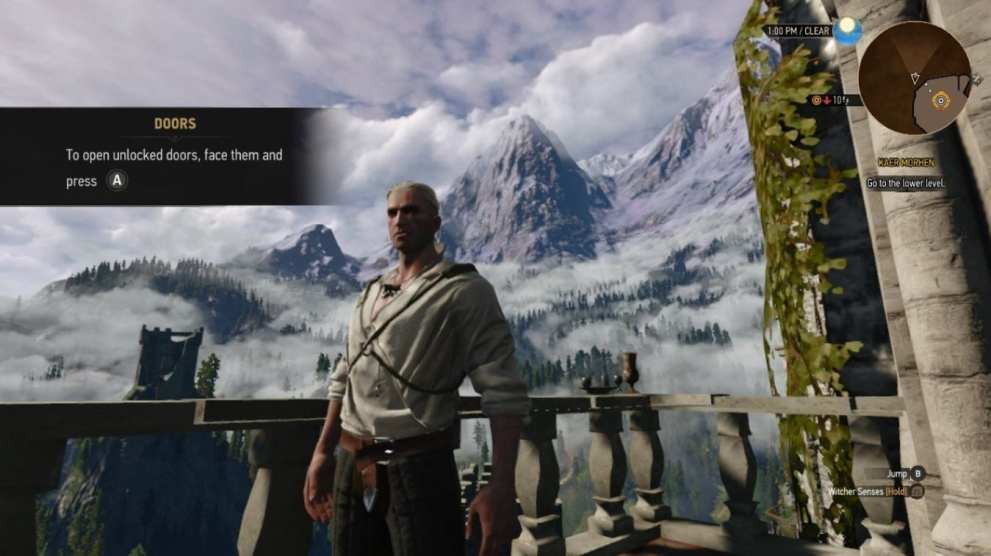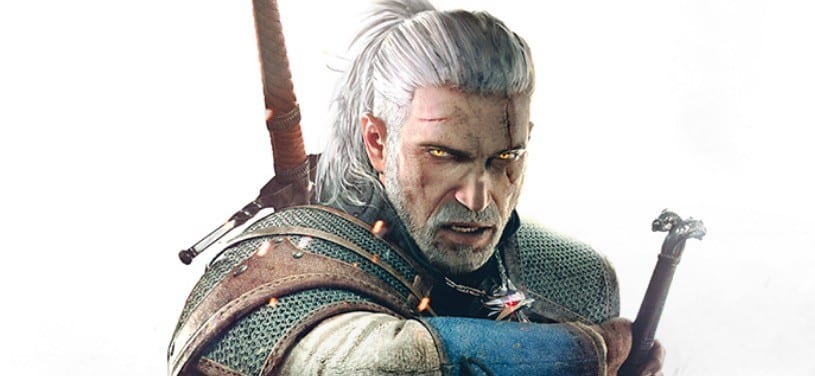My initial experience with The Witcher 3‘s Switch port was a strained one. Weighing in at 32 GB, it took about four screaming hours to download the entire game to my system over Wi-Fi.
Not to mention the excruciating process of realizing that my Switch’s 400 GB Micro SD card had finally reached full capacity, and I needed to figure out a way to free up 32 gigabytes worth of space for this massive RPG.
So, if you’re planning on getting this game digitally, and you don’t have an ethernet cable for your Switch, that initial setup process is gonna be pretty painful.
Once you do get it fully downloaded, though, The Witcher 3 will almost certainly blow your expectations away. Originally announced during the Nintendo Direct at E3 2019, the game footage didn’t look very flattering, with short draw distances and low-res textures in the open world.
Indeed, the open world environments are easily the weakest part of this Switch port, and it becomes so painfully obvious that the Switch is nowhere near as powerful as the PS4 and Xbox One in terms of graphical prowess. The outdoor segments will occasionally be filled with muddy or blurry looking textures, and pop-in is never a nice thing to deal with.

However, despite all its warts, you’ll find that almost nothing else has been scaled back or dialed down in this port. When you first enter White Orchard, you’ll still find dozens of NPCs milling around town, going about their business. All the NPCs and enemies are still lurking around; graphical fidelity aside, everything that was present in the other console and PC versions of The Witcher 3 are here as well.
And while the open world doesn’t always look that great, The Witcher 3 on Switch manages to hide most of its flaws when you’re indoors or in a cutscene. The darker lighting effects when you’re indoors help to mask the uglier textures, whereas the character models have all been touched up to look quite good.
That’s an important point to note, as much of your Witcher 3 experience will be spent in dialogue exchanges and conversations with other NPCs, as the camera pans back and forth between both characters. When your character models look polished up, you hardly feel like you’re playing a downgraded version of CD Projekt Red’s incredibly huge RPG.
For the most part, the frame rate stayed stable, with only the occasional chug during intense combat sequences where there were multiple enemies onscreen. An early encounter with the drowners off the coast of White Orchard caused the frame rate to drop slightly, but it was certainly manageable.
Playing on the Switch in handheld mode presented a couple of issues; namely the cramped controls with the tinier face buttons that made combat just a tad harder, and the battery life. The first issue is something you’ll get used to eventually, but if you’re planning on playing The Witcher 3 portably, you’ll probably want to bring a power bank with you.
On the launch day Switch model, The Witcher 3 eats the battery about as fast as Dragon Quest XI does. In an hour, I had dropped about 25% in battery capacity, so you’ll probably be able to eke out a little over three hours of just handheld play before you have to charge it.
Despite the shortcomings of the open world environments and occasional frame rate drops, though, The Witcher 3’s Switch performance has been surprisingly impressive. Even more impressive than the fact that the devs somehow found a way to cramp the entire base game and its two expansions into 32 GB is that it feels like there really aren’t that many compromises here, aside from that graphical drop.
If your mind was blown by the concept of a portable Skyrim, you’ll be more than pleasantly surprised with what Saber Interactive has managed here with The Witcher 3 on Switch.













Updated: Oct 14, 2019 12:08 pm